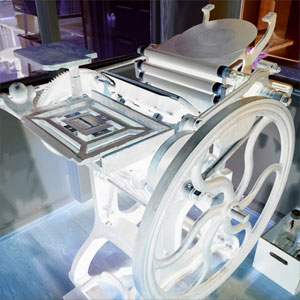
CLB+ Enthusiastic Firefox users enjoy the luxury of Live Bookmarks, a feature of Firefox that automatically discovers and updates RSS feeds. Web pages with available feeds are indicated by the orange feed icon located in the browser’s address bar. Clicking the feed icon presents a list of all available feeds for that particular webpage. Users then select which feeds they would like Firefox to bookmark, track, and automatically update. Makes subscribing stupid easy. Very handy indeed. Continue reading »
If you are running WordPress 2.0.2 and have enabled permalinks, you may have had problems creating a new category or page to your site. I recently encountered this dilemma and devised the following strategy for adding, editing, or even deleting WordPress categories and pages. Note: this tutorial assumes you are running Apache. Continue reading »
To customize WordPress-powered password-protected posts, follow these simple steps. Continue reading »
About a year ago we signed up with a hosting provider that offered one of the best hosting deals around: lots of space, bandwidth, and transfer — plus all of the usual server software amenities that make life easier. Everything went smoothly at first… In fact, the first six months of service were close to 100%. The few help-ticket items submitted were promptly resolved in a professional manner. We were ready to start some business and everything was going great. […] Continue reading »
![[ Head Meta Data ]](https://perishablepress.com/wp/wp-content/images/2012/head-meta-data.png)
Head Meta Data (previously known as Head MetaData Plus) adds a complete set of <meta /> tags to the <head></head> section of all posts and pages on your site. Including meta information about your site is a great way to refine definition, enhance branding, and improve the semantic quality of your pages. Continue reading »
Before today, the extent of my concern with tags involved local post tags via UTW and meta keywords via Autometa. Wanting to dive deeper into tagging, I added metadata Technorati tag links as icons appearing after each local tag link, generally located within post meta information. Adding the icon links is easy. Go to the UTW Options panel and in the “Global Formatting Settings” section, select the Technorati Tag. Then simply add the following (or something similar) to your index.php […] Continue reading »
I love looking at beautiful source-code output. However WordPress tends to spit code out in random chunks, often leaving spaces, line breaks, and tabs littered throughout the source output. This messes things up. Lists don’t look like lists and logically written code often appears scattered along the page carelessly. Often, this is the result of poorly written PHP, which can be manipulated to write beautifully aligned code that looks as good as it works. Continue reading »
Welcome to Perishable Press! This article covers many different aspects of WordPress functionality, including customizing quicktags, deleting the cache, numbering comments & posts, changing password text, and displaying archive menus. Note that this article was written for previous versions (i.e., less than 2.0) of WordPress. Discrepancies may exist between the code presented in this post and that of more recent versions of WordPress. Nonetheless, this information is presented for references purposes with the hope that it will prove useful for […] Continue reading »
Welcome to Perishable Press! This article, Stupid .htaccess Tricks, covers just about every .htaccess “trick” in the book, and easily is the site’s most popular resource. I hope that you find it useful, and either way thank you for visiting :) In addition to this tutorial, you also may want to explore the growing .htaccess archive. Along with all things .htaccess, Perishable Press also focuses on HTML, CSS, PHP, JavaScript, security, and just about every other aspect of web design, […] Continue reading »
This website is the product of over three months of code, design, redesign, and eyedrops. It takes advantage of WordPress 2.0, which has been functioning flawlessly. The Monzilla website (and all subsequent sites) will also employ WP 2.0, or whichever version is the most current at the time of design. Continue reading »


![[ Head Meta Data ]](https://perishablepress.com/wp/wp-content/images/2012/head-meta-data.png)
